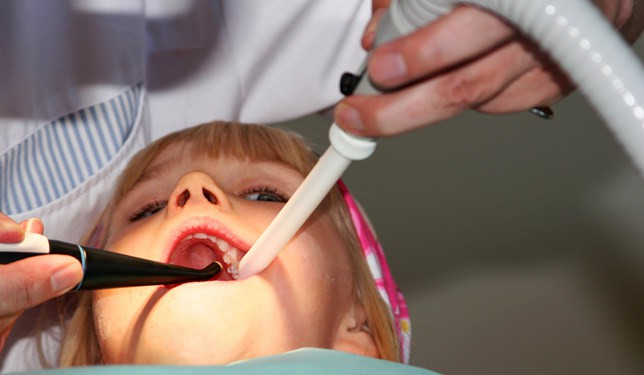 A reader named Jeanny recently emailed me the following questions:
A reader named Jeanny recently emailed me the following questions:
Why is it necessary to suction after local anesthetic?
Why is it necessary to suction when doing a filling?
Can blood be involved in both of the above procedures?
I'll answer the first two questions later on in this article. In response to the last question, blood can be involved when giving anesthetic and doing fillings, but many times it is not.
First, let's talk about the two main types of suctions that dentists routinely use.
The Two Main Types of Dental Suctions
There are two main types of dental suctions that dentists use: the saliva ejector and the high volume suction.
The saliva ejector does exactly what its name implies; it sucks saliva out of the mouth. This is the suction pictured at the upper right of this article. Many times dentists will have the patient close down on this suction so that it can suction away any remaining saliva in the patient's mouth.
The other main type of dental suction that we use is the high volume suction. This suction is so strong that the dental assistant simply holds it close to where the dentist is working and it will suck away any nearby debris, much like a strong vacuum cleaner can suck away crumbs without actually touching them.
You can see the high volume dental suction pictured below - try to pardon the lack of glove use by that dentist!

Why Dentists Use a Dental Suction
Now that the introductions are over, let's talk about some of the different reasons why dentists will use a suction.
For Patient Comfort
Keeping the patient comfortable is a high priority. In response to Jeanny's question, we suction after giving anesthetic because the anesthetic has a bitter taste, and most patients prefer to rinse out with water and use the saliva ejector. Also, if the anesthetic sits in the back of your mouth for too long, it may start to slightly numb the back of your mouth and could give the patient a gagging sensation.
We will also use the suction to make sure that you don't get too much water in your mouth while we are working.
To Clean Away Any Excess Dental Materials
When a dental hygienist cleans and polishes your teeth, you can get a lot of cleaning paste in your mouth. We use the suction to help clean all of that away. Also, when dentists are do amalgam fillings, pieces of the soft amalgam can sometimes fall away from the tooth surface. We use the suction to help whisk them away.
To Keep The Tooth Dry
During some procedures, such as white fillings, it is important that the tooth stay clean and dry. The suction helps keep the tooth dry by sucking away any saliva, blood, and water that may have accumulated around the tooth. If the cavity went below the gum-line, then it's pretty likely that the gums will bleed during the filling.
To Help the Dentist See
As I mentioned in a previous article about the dental drill, the drill that dentists use to do fillings sprays out a lot of water to keep the tooth cool and clean. Unfortunately, that water can quickly build up in the mouth and get on the dental mirror. In order to ensure that the dentist can see the tooth while working on it, it's necessary to use the high volume suction to suck away all of that debris.
Those are the four main reasons that I came up with as to why dentists use the dental suction. In conclusion, let's take a look at a question that I asked my dental hygienist as a child.
Where Does The Stuff Go After It's Sucked Away?
I remember sitting in the dental chair in Dr. Arnold's office as a child wondering what happens to all of the stuff that gets sucked down the suction. Maybe I was hoping that the tooth fairy would somehow be able to save the bad part of my baby tooth that the dentist removed and put it back together once my tooth fell out. After gathering up the courage to ask, I think I was slightly disappointed by the answer.
After your saliva, tooth debris, etc. gets sucked away, it travels through the suction line to a vacuum separator that will separate out any solids. After that, your spit makes a journey down the pipes and into the sewer system.
It is now recommended that dentists install amalgam separators in their suction lines to separate out any dental amalgam and keep it from getting into the public sewer systems.
Questions?
Do you have any questions about why dentists use suction? Leave a comment below and I'll try to get back to you. Thanks for reading!
Source: http://feedproxy.google.com/~r/OralAnswers/~3/mAT_akibDxY/
dental implant surgery mouth surgery tooth implant procedure dental news dental implant procedure
No comments:
Post a Comment